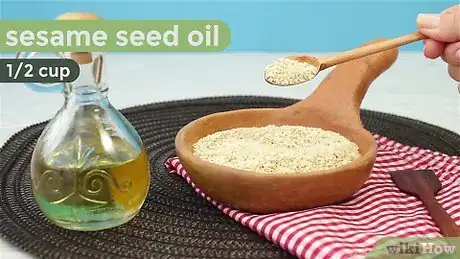This article was co-authored by Abyssinia Campbell and by wikiHow staff writer, Amber Crain. Abyssinia Campbell is an Executive Chef and the Owner of Chef Abyssinia, Personal Chef and Catering. With over ten years of experience, she specializes in catering, event planning, menu development, meal planning, and food business operations. When it comes to cooking, Chef Abyssinia enjoys using fruits, vegetables, healthy food alternatives, and local farm-fresh ingredients. She holds a BASc in Culinary Arts and Food Service Management from Johnson and Wales University.
There are 18 references cited in this article, which can be found at the bottom of the page.
This article has been viewed 10,340 times.
If your sauteed veggies taste bland, adding seasonings can enhance or even completely change the flavor. But since there are so many options and flavor combos out there, it can be tough to know what to pair with what. Check out this list if you need some inspiration! We'll walk you through different types of seasonings and explain the proper sequence for adding them so you end up with the best flavor possible. We'll also touch on some winning veggie-seasoning combos you can try out.
Steps
References
- ↑ Abyssinia Campbell. Executive Chef. Expert Interview. 31 August 2021.
- ↑ https://www.bonappetit.com/test-kitchen/ingredients/article/types-of-cooking-oil
- ↑ https://www.gbmc.org/sauteed-vegetables-sleeved-chef
- ↑ https://www.epicurious.com/expert-advice/stop-roasting-vegetables-and-learn-how-to-saute-asparagus-chard-mushrooms-article
- ↑ Abyssinia Campbell. Executive Chef. Expert Interview. 31 August 2021.
- ↑ https://www.onegreenplanet.org/vegan-food/how-to-cook-flavorful-vegetables/
- ↑ Abyssinia Campbell. Executive Chef. Expert Interview. 31 August 2021.
- ↑ https://www.eatright.org/food/vitamins-and-supplements/nutrient-rich-foods/exploring-aromatics
- ↑ https://www.heart.org/en/healthy-living/healthy-eating/cooking-skills/preparing/common-herbs-and-spices-how-to-use-them-deliciously
- ↑ https://www.eatright.org/food/planning-and-prep/cooking-tips-and-trends/get-to-know-your-spice-rack
- ↑ https://www.heart.org/en/healthy-living/healthy-eating/cooking-skills/preparing/common-herbs-and-spices-how-to-use-them-deliciously
- ↑ https://www.heart.org/en/healthy-living/healthy-eating/cooking-skills/preparing/how-to-add-flavor-using-herbs-and-spices-video
- ↑ https://www.udel.edu/academics/colleges/canr/cooperative-extension/fact-sheets/herbs-spices-on-food/
- ↑ Abyssinia Campbell. Executive Chef. Expert Interview. 31 August 2021.
- ↑ https://www.heart.org/en/healthy-living/healthy-eating/cooking-skills/preparing/common-herbs-and-spices-how-to-use-them-deliciously
- ↑ https://www.pennmedicine.org/updates/blogs/heart-and-vascular-blog/2018/november/heart-healthy-tips-on-cooking-with-herbs-and-spices
- ↑ https://itsavegworldafterall.com/vegetable-seasoning-guide/
- ↑ https://www.udel.edu/academics/colleges/canr/cooperative-extension/fact-sheets/herbs-spices-on-food/
- ↑ https://itsavegworldafterall.com/vegetable-seasoning-guide/
- ↑ https://www.eatright.org/food/planning-and-prep/cooking-tips-and-trends/get-to-know-your-spice-rack
- ↑ https://onieproject.org/cooking-with-herbs-spices/
- ↑ https://www.onegreenplanet.org/vegan-food/how-to-cook-veggies-indian-style/
- ↑ https://www.heart.org/en/healthy-living/healthy-eating/cooking-skills/preparing/how-to-add-flavor-using-herbs-and-spices-video
- ↑ https://www.pennmedicine.org/updates/blogs/heart-and-vascular-blog/2018/november/heart-healthy-tips-on-cooking-with-herbs-and-spices
- ↑ https://www.marthastewart.com/1536407/best-cooking-oils-flavors-uses
- ↑ https://www.mayoclinic.org/healthy-lifestyle/nutrition-and-healthy-eating/expert-answers/cooking-oil/faq-20058170
- ↑ https://www.consumerreports.org/cooking-oil/choose-a-healthy-oil-for-cooking/
- ↑ https://www.bonappetit.com/test-kitchen/ingredients/article/types-of-cooking-oil
- ↑ Abyssinia Campbell. Executive Chef. Expert Interview. 31 August 2021.
- ↑ https://www.eatright.org/food/planning-and-prep/cooking-tips-and-trends/get-to-know-your-spice-rack























































